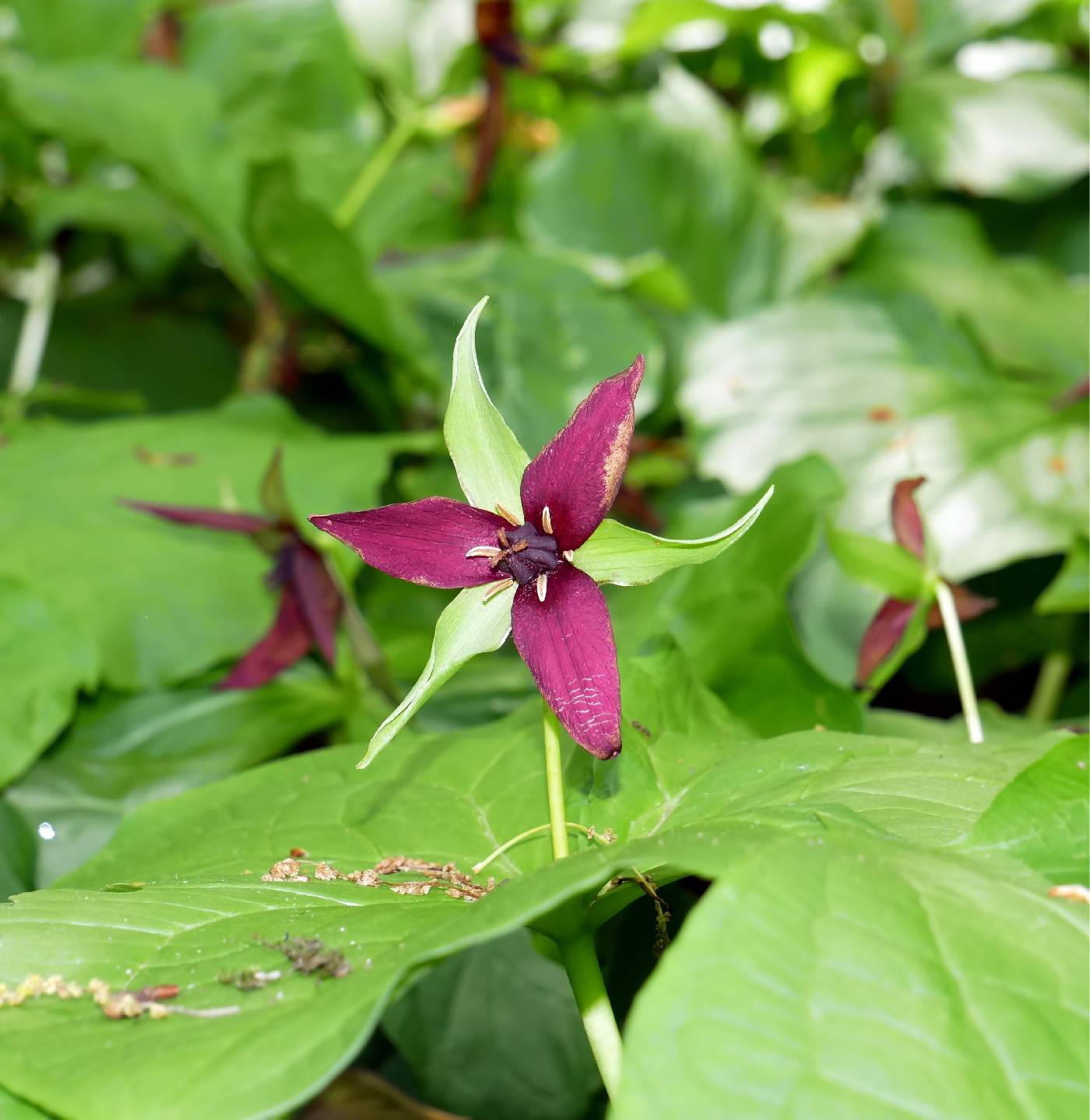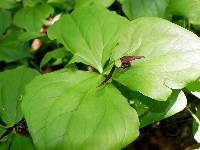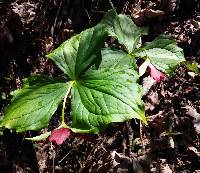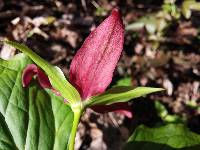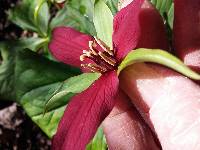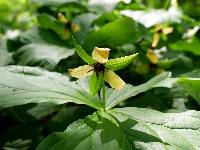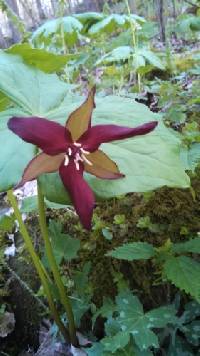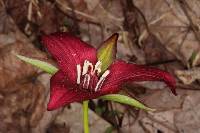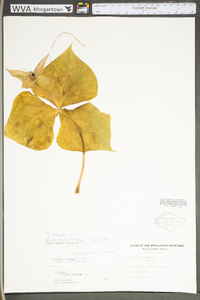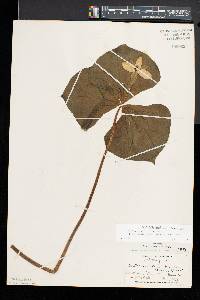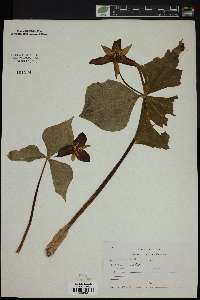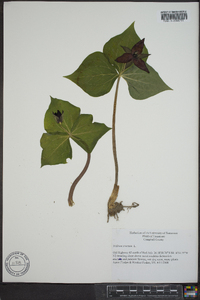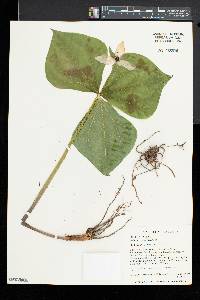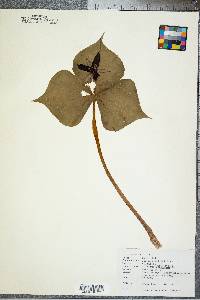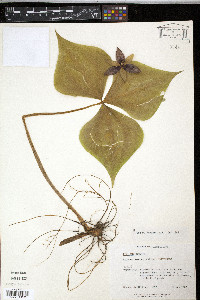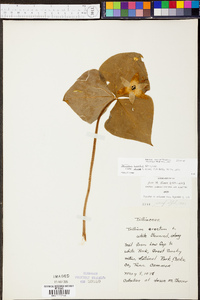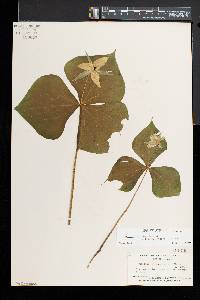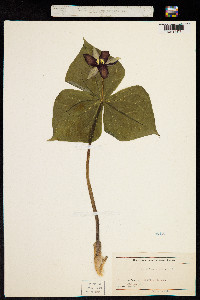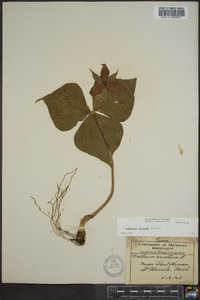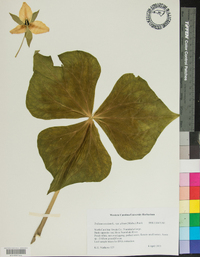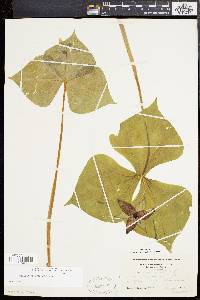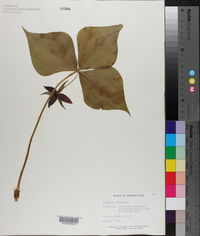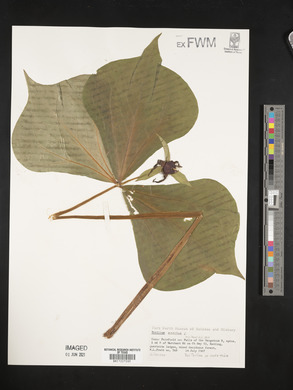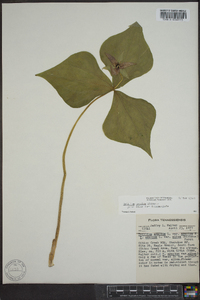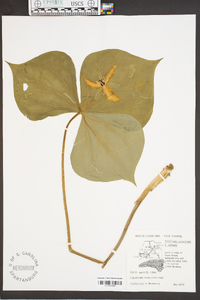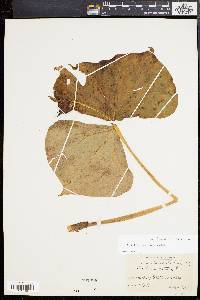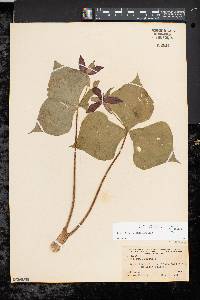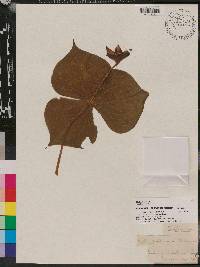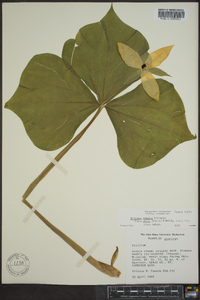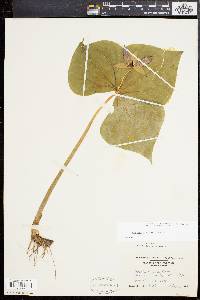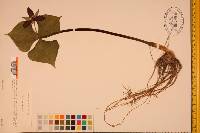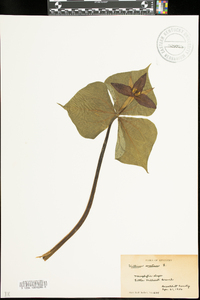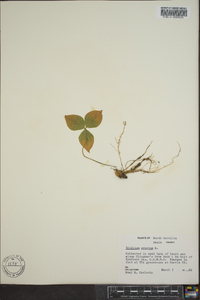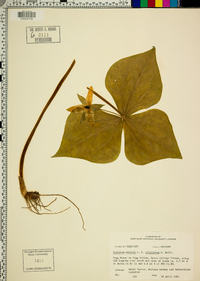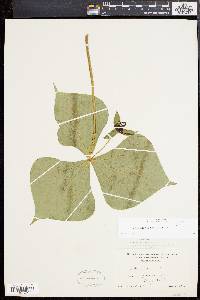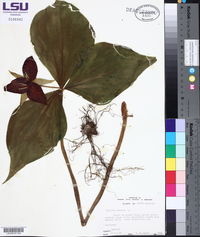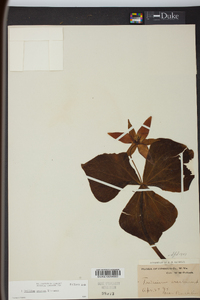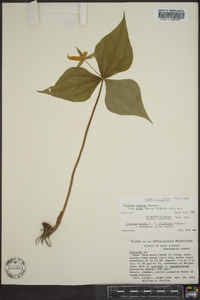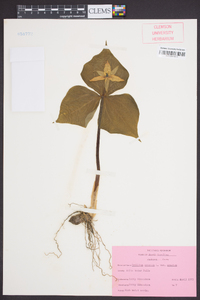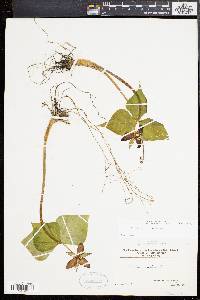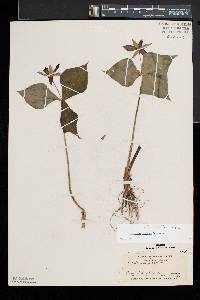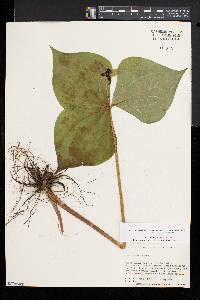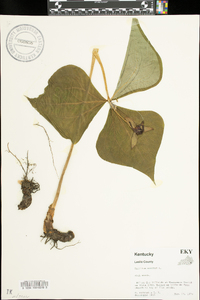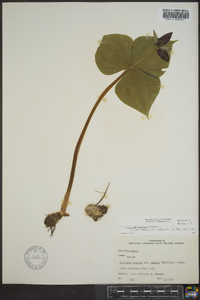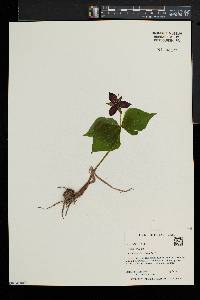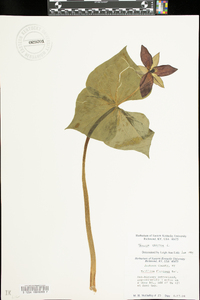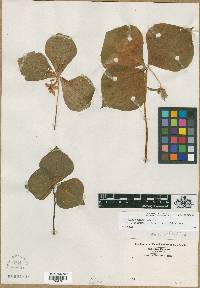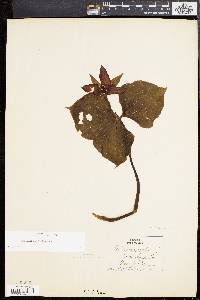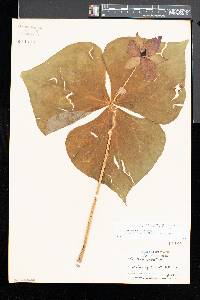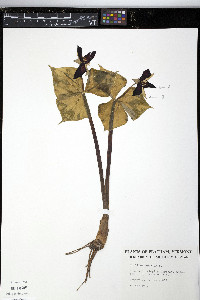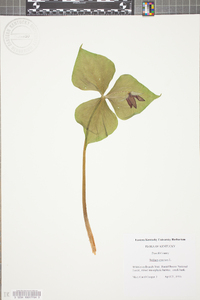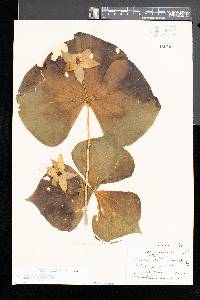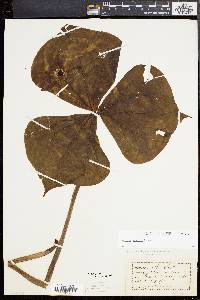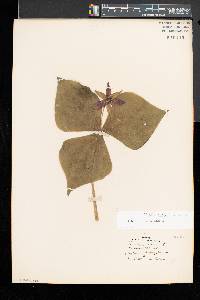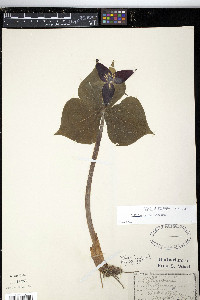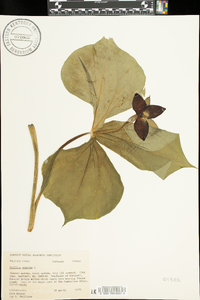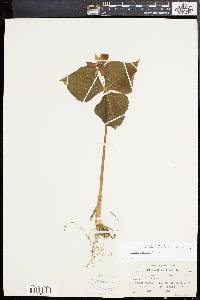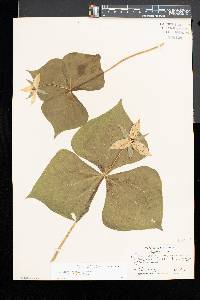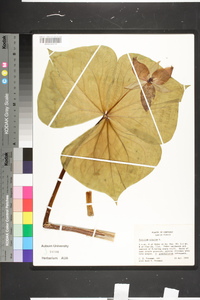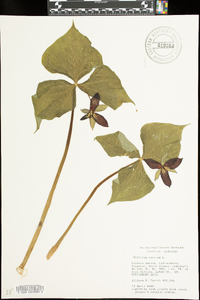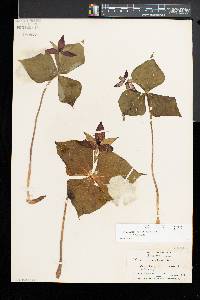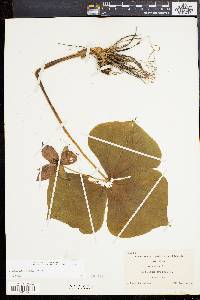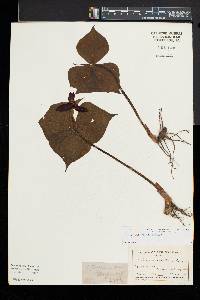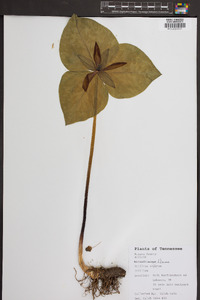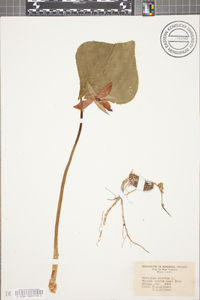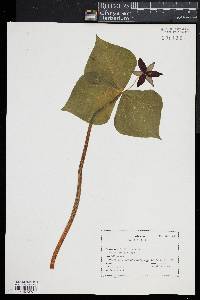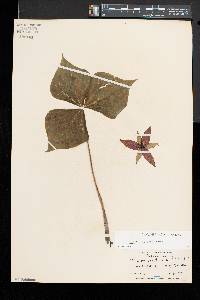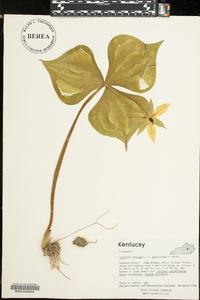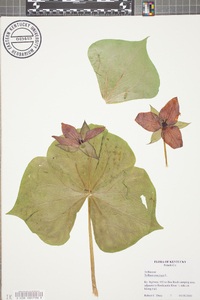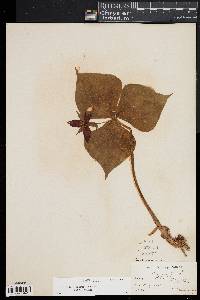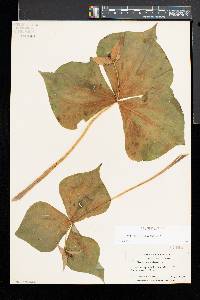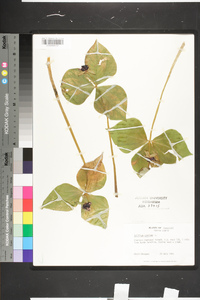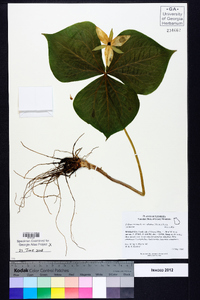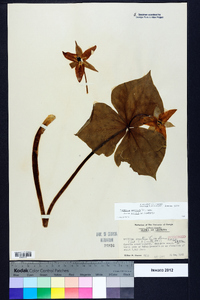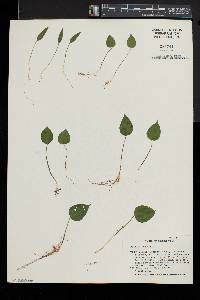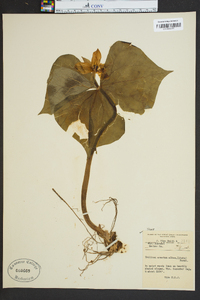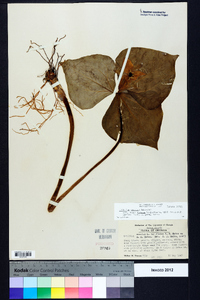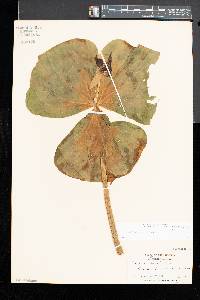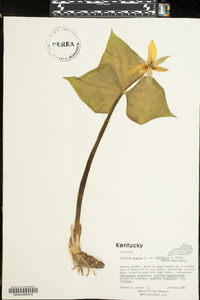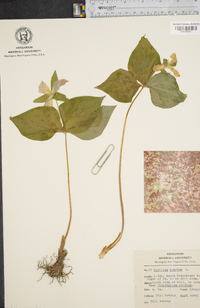
|
|
|
|
Family: Melanthiaceae
Stinking-Benjamin, more...red trillium, stinking benjamin
[Trillium erectum var. declinatum] |
Rhizomes short, thick, praemorse. Scapes 1-2, often with numerous offsets forming heavy clumps, round in cross section, 1.5-6 dm, ± robust, glabrous. Bracts sessile; blade bright green, lacking dark pigmentation, major veins prominent, broadly rhombic to ovate-rhombic, 5-20 × 5-20 cm, about as broad as long, widest near middle, base attenuate, apex acuminate. Flower erect, ascending, or proximal to but above bracts, odor fetid, like a wet dog; perianth open, flat; sepals flat to sulcate apically, green, often streaked or overlain with maroon, occasionally entirely dark maroon, lanceolate-acuminate, 10-50 mm, equaling petals, ± 1/2 petal width, texture leafy, margins entire, apex acuminate; petals spreading, carried in same plane as sepals or ascending slightly, dark reddish brown, maroon, purple, or white, sometimes pale yellow, major adaxial veins prominent and appearing somewhat engraved, usually flat, lanceolate, ovate-lanceolate, or occasionally ovate, 1.5-5 × 1-3 cm, 2 times sepal width, widest near base, heavy-textured, apex acuminate; stamens erect to slightly recurved, 5-15 mm; filaments white, pinkish, or dark purple, ± equaling anthers, but variable within local populations, thin; anthers erect or weakly recurving, dark maroon, grayish maroon, or yellowish, strongly yellow when pollen exposed, 5-12 mm, dehiscence introrse; ovary dark purple to maroon, even in white-flowered forms, ovoid, elliptic to globose, 6-angled, angles forming very low ridges when fruit is ripe, 5-10 mm, broadly attached at base; stigmas recurved, distinct, dark purple, not lobed adaxially, subulate, short, 3-7 mm, ca. 1/2 or less length of ovary at anthesis, fleshy; pedicel straight, erect, or somewhat declined but not strongly recurved below bracts, 1-10+ cm. Fruits dark maroon, weakly fragrant of fruit, ± globose to slightly pyramidal, 1-1.6 × 1-1.5 cm, juicy. 2n = 10. Perennial herb with a short, stout rhizome stem 20 - 40 cm tall Flowers: single, above the leaves, with six distinct tepals, bad-smelling. Flower stalk upright or ascending, 1 - 10 cm long. Stamens six, alternating in two whorls of three. Sepals: three, persistent, streaked with maroon or sometimes entirely maroon, 1 - 5 cm long (about equal to the petals and about half the width), lance- to egg-shaped with a pointed tip. Petals: three, usually maroon (sometimes white, yellow, or green), 2.5 - 6 cm long, 1.5 - 5 cm long, 1 - 3 cm wide, lance- to egg-shaped with a pointed tip, widely spreading, shriveling after the flowering period. Fruit: a many-seeded berry, dark maroon, 1 - 1.6 cm long, egg-shaped to spherical, juicy, with six wing-ribs. Seeds many, elliptic. Similar species: The stalkless (or nearly stalkless) leaves and upright or ascending flower stalks distinguish this species and Trillium grandiflorum from all other Trillium species. Trillium grandiflorum differs by having a flower that is typically white and funnel-shaped at the base. Flowering: May Habitat and ecology: Very rare in the Chicago Region. Typically found in moist woods. Occurence in the Chicago region: native Notes: Trilliums do not actually have true leaves or stems above the ground. The underground rhizome produces scale-like leaves called cataphylls. The aboveground leaf-like structures are bracts that subtend the flower, but these are internally and externally similar to leaves and function in photosynthesis. Many authors will refer to them as leaves. Etymology: Trillium comes from the Greek word trilix, meaning triple, referring to how all the plant parts occur in threes. Erectum means erect, or upright. Author: The Morton Arboretum Stem 2-4 dm; lvs usually broadly rhombic, about as wide as long, narrowed with nearly straight margins from near the middle to the acute base; peduncle erect to lateral, mostly 3-8 cm, up to ca twice as long as the sep, the ±foetid fls held ±above the lvs; sep lanceolate to lance-ovate or seldom ovate, flat or weakly sulcate-tipped, ca equaling or somewhat shorter than the pet; pet normally maroon (white, yellow, or green), lanceolate to lance-ovate or seldom ovate, 2.5-6 cm, acute, widely spreading from the base, exposing the dark ovary; stamens shorter to somewhat longer than the ovary, the filaments mostly a fourth to half as long as the anthers; fr dark red, ovoid-globose, with 6 wing-ribs; 2n=10. Moist woods; Que. and Ont. to Md. and O. and reputedly ne. Ill., s. to the mts. of N.C., Ga., and Tenn. Apr., May. Gleason, Henry A. & Cronquist, Arthur J. 1991. Manual of vascular plants of northeastern United States and adjacent Canada. lxxv + 910 pp. ©The New York Botanical Garden. All rights reserved. Used by permission. |
|
|
|

